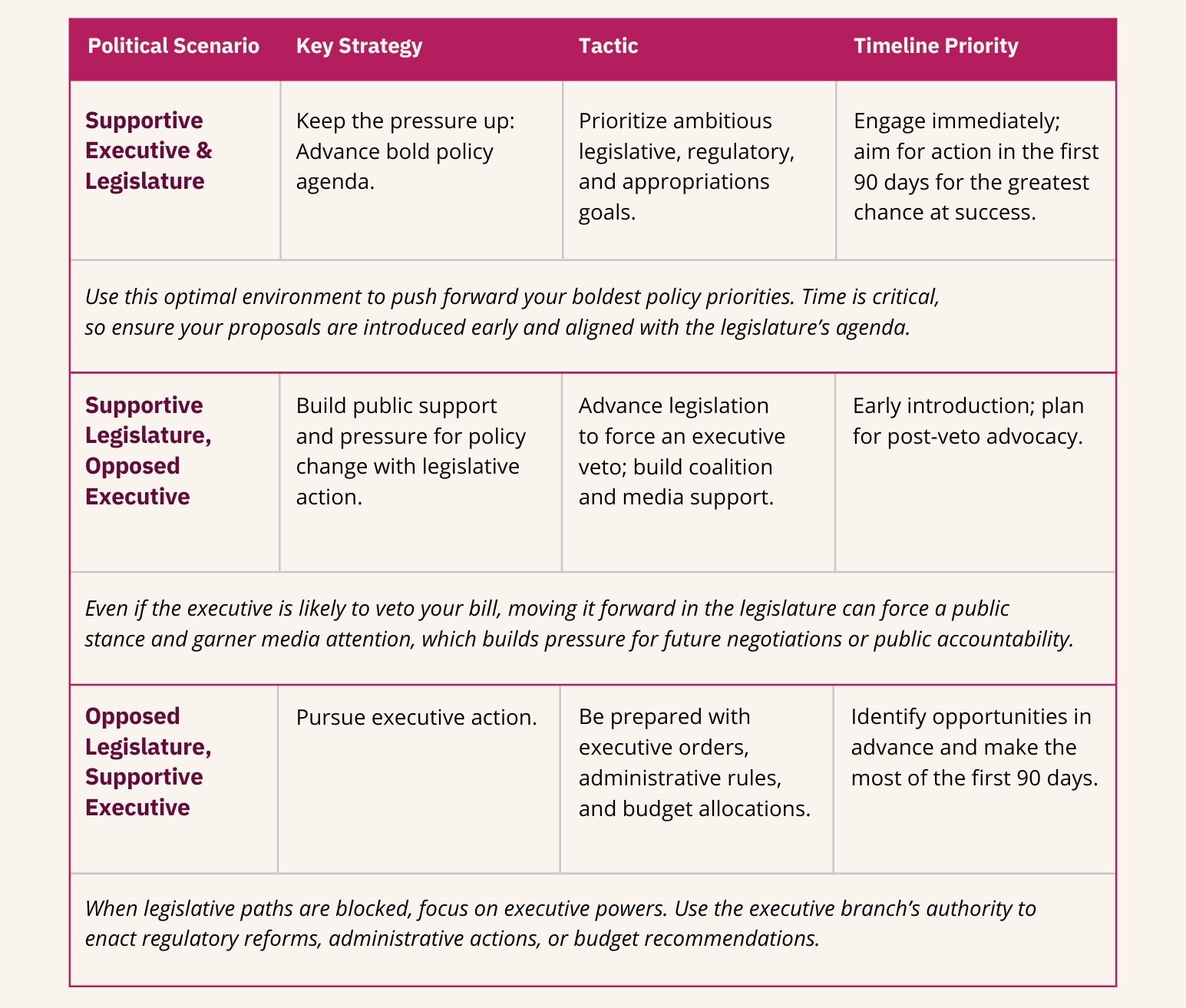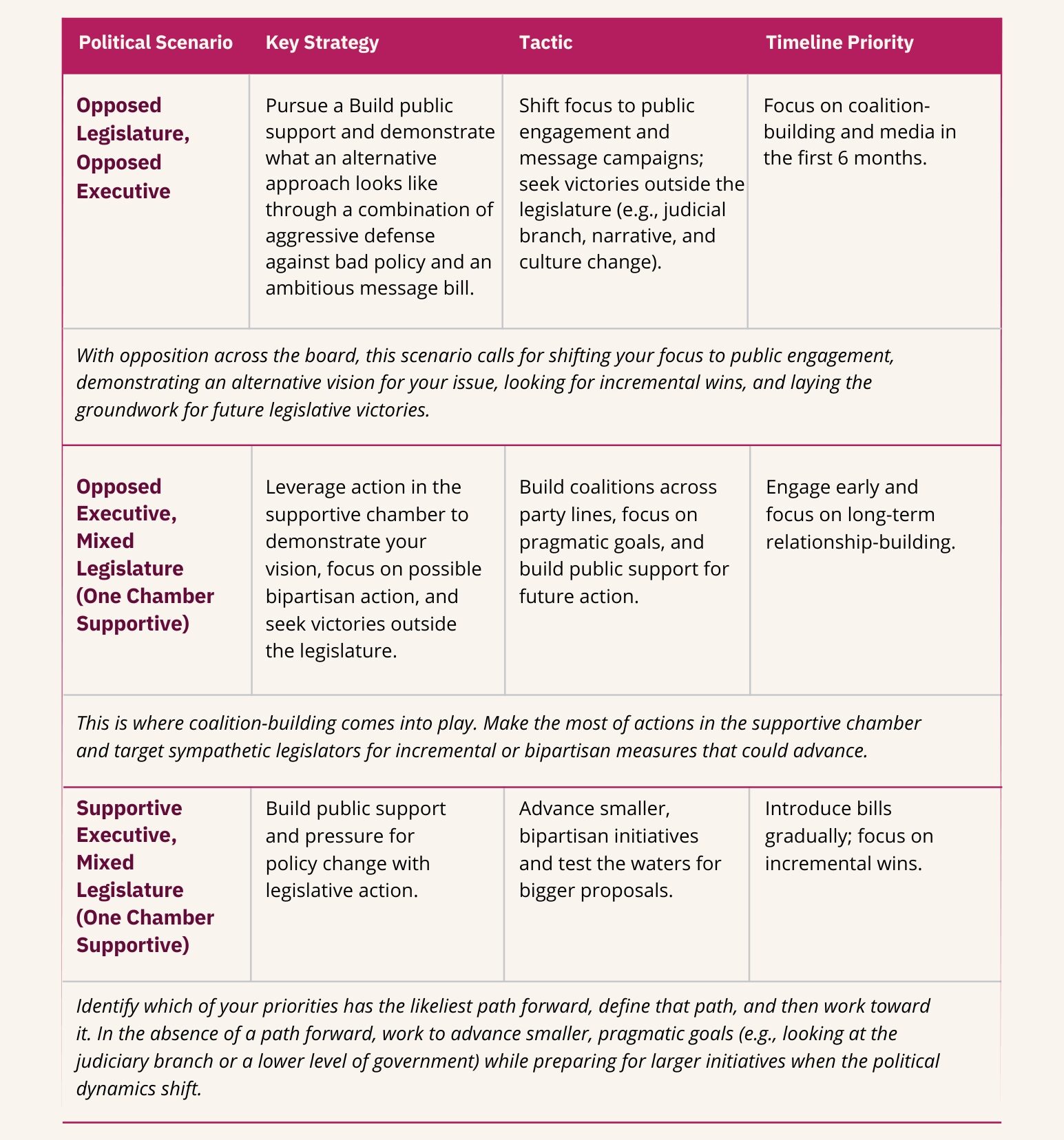Effective advocacy post-election with a new legislature or executive branch requires adapting to a new political landscape, whether you find yourself working with policymakers who support, oppose, or have mixed positions on your issues.
REGARDLESS OF WHO IS ELECTED AND THEIR LEVEL OF SUPPORT FOR YOUR ISSUES, ADVOCATES MUST CONTINUE TO DRIVE THE POLICY AGENDA FORWARD.
Planning your strategy ahead of time according to the dynamics of the new political environment helps ensure your organization can hit the ground running to advance its priority issues.
ISSUE-SPECIFIC SCENARIO PLANNING
Crucially, advocates should adopt an issue-specific mindset when scenario planning. PN-3 issues are widely popular across the political spectrum, so determining whether a branch of government is “red” or “blue” is not enough insight to predict whether your PN-3 policy will succeed. There is a big difference between someone indicating they “support” early childhood education and someone willing to take action to create a path forward for legislation. Advocates need to assess which elected officials are willing to spend their political capital to prioritize advancing strong PN-3 legislation.
Some questions to consider when taking an issue-specific approach to scenario planning include:
- What are the possible electoral outcomes for each branch of government?
- Which of your organization’s policy priorities has the clearest path forward in each possible election scenario?
- Are your advocacy partners and coalition members aligned on which policy priority your movement will push forward in each scenario?
- What could victory look like regardless of the electoral outcome? Can you get more granular by looking at the executive branch for possible regulatory wins or local government to identify potential policy victories?
- How can communications and mobilization strategies support your advocacy efforts in each scenario?
- What do polls tell us about constituent support for various PN-3 policies from voters in key districts?
Below, we’ve included a sample table outlining key strategies, tactics, and timelines to consider in any given political scenario. Your organization can create its own issue-specific version of this chart by referencing the blank chart for your use in the appendix. Regardless of the election outcome, you can and should seek ways to move the needle on your issues!


NCIT is here to support your advocacy campaign in a variety of ways to help you plan and execute your campaign. We support advocacy campaigns by mobilizing communities, advancing science and research through communications and messaging expertise, and other forms of capacity building for organizations. We offer tools and resources, connections to partner organizations, one-on-one coaching, and training to organizations advocating for policies that impact expectant parents, infants, toddlers, and their families. Each request starts a conversation – you don’t have to have all the details ready. We’ll get you connected to the right person! Connect with us here!

